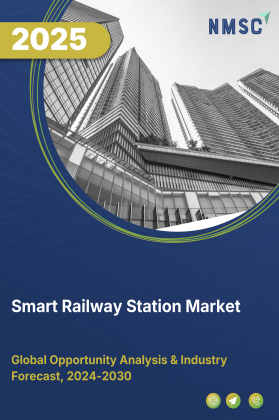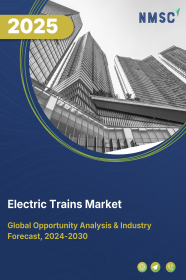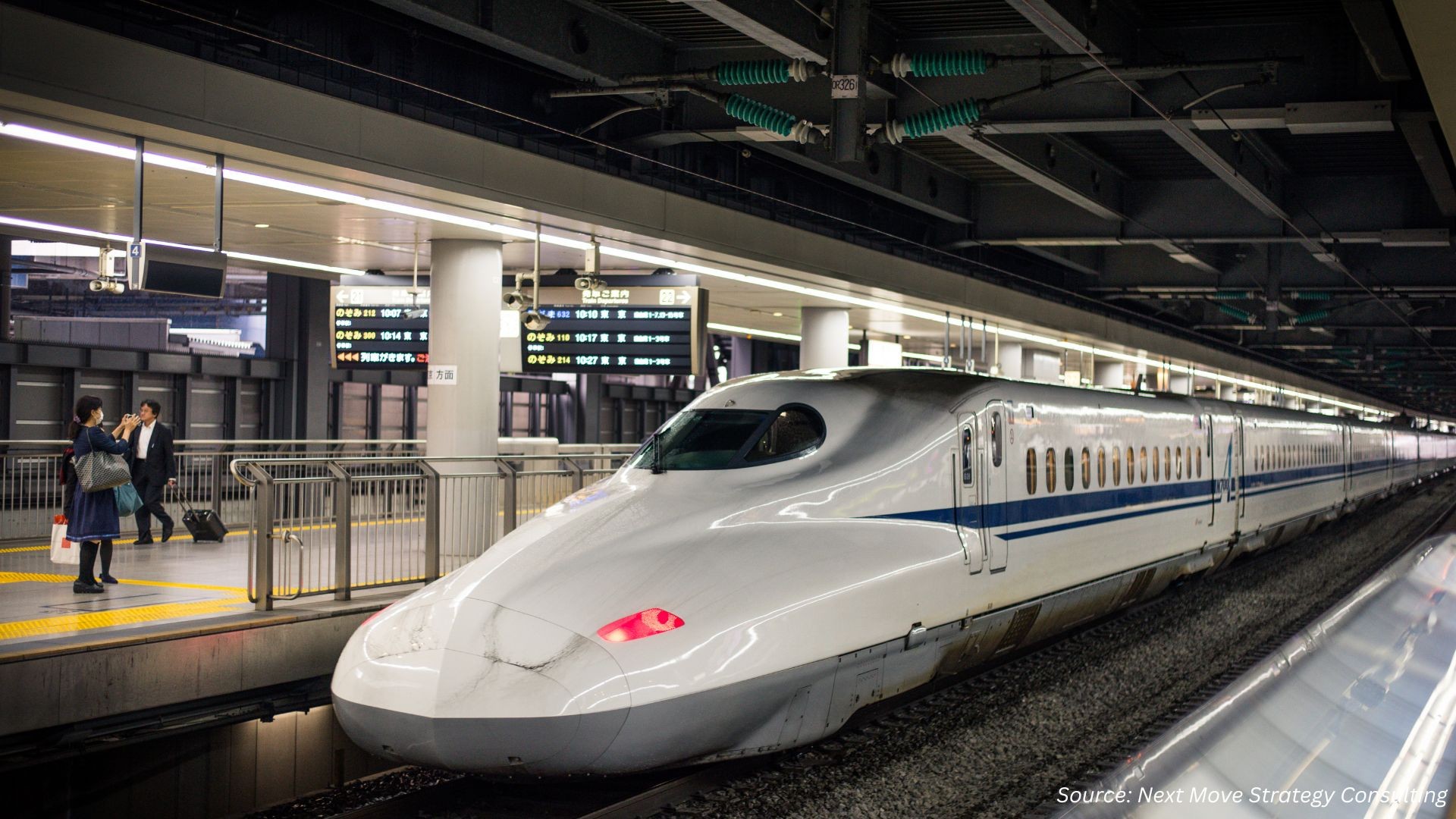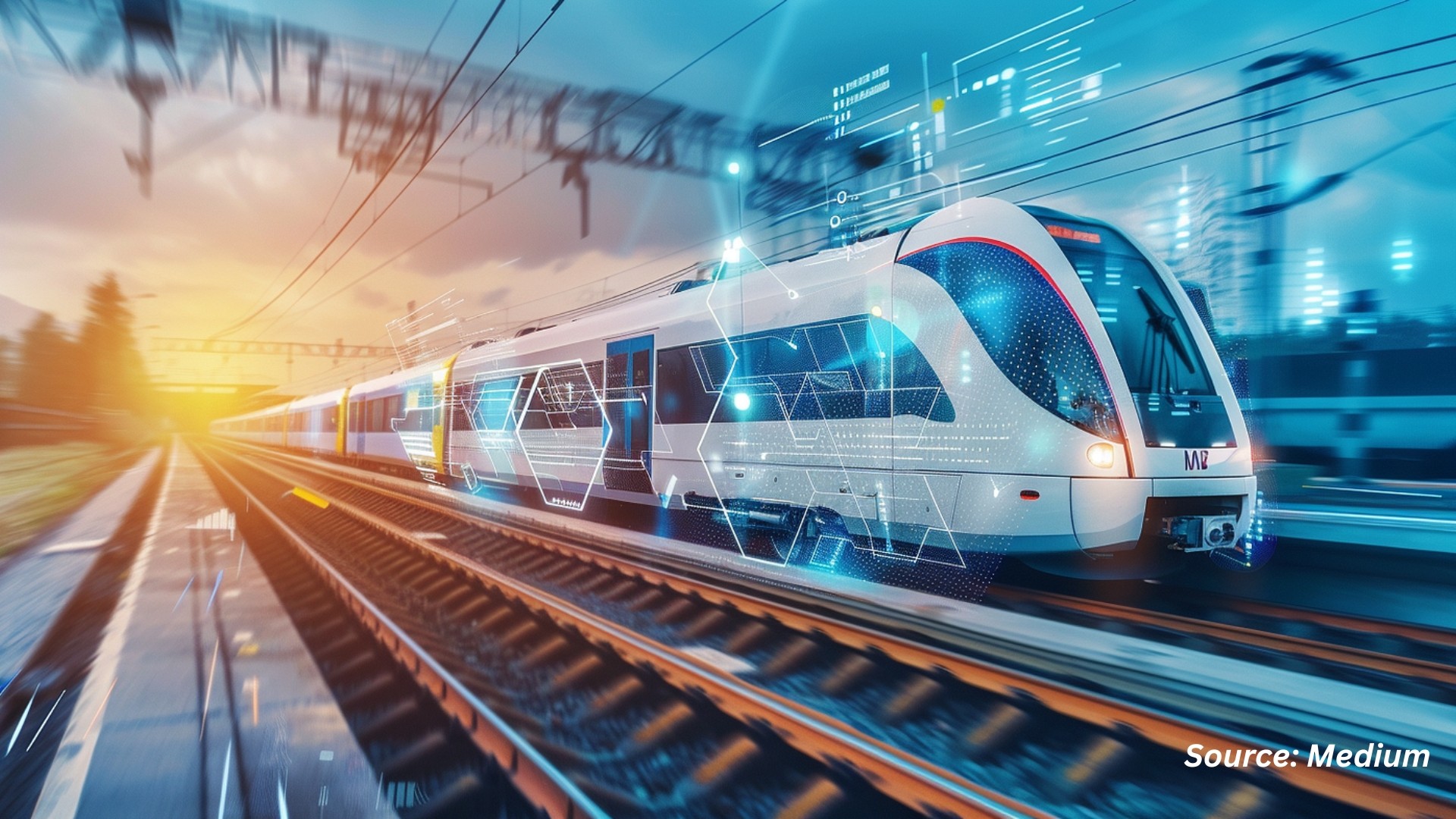
Smart Railway Station Market by Component (Hardware, Software, and Services), by Technology (Internet of Things, Artificial Intelligence and Machine Learning, Big Data Analytics and Others), by Application (Passenger Information and Communication, Smart Ticketing and Fare Collection, Security and Safety Monitoring and Others), and by End User (Government Sector, Private Rail Operators and Others) – Global Opportunity Analysis and Industry Forecast, 2025–2030
Smart Railway Station Industry Outlook
The global Smart Railway Station Market size was valued at USD 75.60 billion in 2024, with an estimation of USD 85.58 billion in 2025 and is predicted to reach USD 159.07 billion by 2030 with a CAGR of 13.2% from 2025-2030.
The industry is evolving rapidly, driven by rising passenger demand, government investments, and sustainability goals. Rapid urbanization has intensified commuter volumes, pushing stations to integrate advanced technologies such as automated ticketing, digital passenger information, and AI-driven crowd management to improve efficiency and passenger experience.
At the same time, strong policy support and funding are fueling modernization with IoT-enabled monitoring, smart security, and digital infrastructure upgrades. Furthermore, the growing focus on sustainability and energy efficiency is encouraging adoption of renewable energy, smart lighting, and eco-friendly station designs, positioning smart railway stations as a cornerstone of future-ready, sustainable urban mobility.
Rising Passenger Demand & Urbanization Drives the Market Growth
Rising passenger demand & urbanization is a major driver of the smart railway station market growth. Rapid urban growth has led to higher commuter volumes, creating pressure on existing railway infrastructure to handle increased passenger flow efficiently.
As cities expand and populations rise, stations must adopt advanced technologies such as automated ticketing, digital passenger information systems, and AI-based crowd management tools to reduce congestion and improve travel convenience. This growing demand for efficient, safe, and seamless mobility solutions is accelerating investments in smart railway stations worldwide.
Government Investments in Smart Infrastructure Boosts the Market Demand
Government investments in smart infrastructure are crucial drivers of the smart railway station market demand. Many governments and railway authorities are allocating significant budgets to modernize transport hubs with digital technologies, smart ticketing systems, advanced surveillance, and IoT-based monitoring.
These initiatives not only improve operational efficiency and passenger safety but also align with broader goals of building sustainable, future-ready urban infrastructure. Such policy support and funding are accelerating the adoption of smart railway stations globally.
Sustainability & Energy Efficiency Goals Fuels Market Expansion
Sustainability & energy efficiency goals are strongly driving the market. With growing emphasis on reducing carbon emissions and achieving net-zero targets, railway authorities are incorporating renewable energy sources, smart lighting, and energy management systems into station designs. These eco-friendly initiatives not only lower operational costs but also align with global climate policies, making smart stations a preferred choice for sustainable urban mobility.
High Initial Investment and Implementation Cost Limits the Market Growth
One key restraint of the smart railway station market expansion is the high initial investment and implementation cost. Deploying advanced technologies such as IoT-enabled systems, AI-driven surveillance, smart ticketing, and energy-efficient infrastructure requires substantial capital expenditure.
Many developing regions face budget constraints, making it difficult to modernize older stations or adopt large-scale smart solutions. This financial barrier slows down the pace of adoption, especially in countries with limited funding or competing infrastructure priorities.
Integration of Digital Technologies Creates New Opportunities for the Market
One major opportunity in the market lies in the integration of digital technologies such as IoT, AI, and big data analytics. By leveraging these solutions, stations enable predictive maintenance, real-time passenger information, automated ticketing, and seamless mobility services. This not only enhances passenger experience but also creates new revenue streams through smart retail, digital advertising, and data-driven services, opening significant growth potential for technology providers and railway operators.
Market Segmentations and Scope of the Study
The smart railway station market report is segmented on the basis of component, technology, station type, deployment model, application, and end users. On the basis of component, the market is divided into hardware, software, and services. Based on technology, the market covers Internet of Things (IoT), artificial intelligence and machine learning, big data analytics, cloud computing, blockchain, 5G and advanced connectivity, and augmented/virtual reality. On the basis of station type, the market is classified into urban railway stations, suburban railway stations, intercity railway stations, high-speed rail stations, metro, and others. Based on deployment model, the market is divided into on-premise, cloud-based, and hybrid. By application, the market includes passenger information and communication, smart ticketing and fare collection, security and safety monitoring, station operations and asset management, crowd management and flow optimization, energy management and sustainability, and retail and commercial services. Finally, on the basis of end users, the market is segmented into government sector, private rail operators, public-private partnerships, and transit authorities. The regional breakdown includes regions such as North America, Europe, Asia-Pacific, and the Rest of the World (RoW).
Geographical Analysis
In North America, a key driver of the smart railway station market share is the modernization of aging railway infrastructure. Many stations across the U.S. and Canada were built decades ago and require upgrades to meet current passenger expectations for safety, efficiency, and digital services. Investments in smart ticketing, advanced surveillance, and IoT-enabled systems are helping transform outdated facilities into modern, technology-driven hubs, supporting smoother operations and improved passenger experiences.
In Europe, the market is being strongly driven by the region’s commitment to digital transformation and sustainability in transportation. The European Union, through initiatives such as the EU Green Deal and Smart Mobility Strategy, is pushing railway operators to modernize stations with advanced technologies, including smart ticketing, AI-powered crowd management, real-time passenger information systems, and IoT-based energy management solutions.
These measures not only improve operational efficiency and passenger convenience but also align with Europe’s broader climate goals of reducing emissions and achieving carbon neutrality. Countries such as Germany, France, and the UK are leading with large-scale projects, including digital rail initiatives, contactless mobility solutions, and the integration of renewable energy into station infrastructure, setting a benchmark for sustainable and future-ready railway hubs.
In Asia Pacific, the growth of the market is closely tied to rapid urbanization and government investments in modern transport infrastructure. According to the World Bank in 2024, the urban population in India and China accounted for 37% and 66% of their total populations, respectively, highlighting the massive demand for efficient public transit systems.
To meet this need, countries across the region are implementing smart technologies such as automated ticketing, AI-based surveillance, and IoT-enabled monitoring within railway stations. Furthermore, large-scale projects like high-speed rail corridors and smart city initiatives are accelerating the adoption of energy-efficient, digitally connected stations, positioning Asia Pacific as one of the fastest-growing sectors for smart railway stations.
In the Rest of the World (RoW), a key driver of the market is the growing demand for enhanced passenger experience. Travelers in regions such as the Middle East, Latin America, and Africa are increasingly expecting seamless, technology-enabled journeys, which has accelerated the adoption of contactless ticketing, real-time travel updates, digital kiosks, and mobile-based services. These advancements not only improve safety and convenience but also support new revenue streams through in-station retail and digital services, positioning smart stations as central to modern urban mobility.
Strategic Innovations Adopted by Key Players
Key players in the smart railway station industry are accelerating global expansion through upscale brand launches, service diversification, and strategic partnerships.
-
In June 2025, At the UITP Summit 2025, Siemens Mobility introduced its Digital Station concept, showcasing solutions such as Train2Cloud and RailXplore under the Siemens Xcelerator platform. Designed to deliver integrated station management, AI-driven passenger services, and energy-efficient operations, the initiative underscores Siemens’ commitment to shaping the next generation of urban transit hubs. By targeting enhanced efficiency and sustainability, Siemens is strengthening its footprint in the global smart railway station, boosting visibility across Europe and Asia while securing long-term contracts with metro operators.
-
In March 2025, In March 2025, Huawei introduced its Smart Railway Yard & Station Solution as part of seven new smart transportation offerings. Leveraging cloud, AI, and 5G, the solution enhances passenger services, safety, and energy efficiency in stations. Targeting developing markets across Asia and the Middle East, Huawei is positioning itself as a technology-driven disruptor in the global smart railway station market, strengthening its role in smart city integration and state-led modernization programs.
Key Benefits
-
The report provides quantitative analysis and estimations of the sector from 2025 to 2030, which assists in identifying the prevailing smart railway station market opportunities.
-
The study comprises a deep-dive analysis of the current and future smart railway station market trends to depict prevalent investment pockets in the industry.
-
Information related to key drivers, restraints, and opportunities and their impact on the industry is provided in the report.
-
Competitive analysis of the players, along with their market share is provided in the report.
-
SWOT analysis and Porters Five Forces model is elaborated in the study.
-
Value chain analysis in the market study provides a clear picture of roles of stakeholders
Smart Railway Station Market Key Segments
By Component
-
Hardware
-
Video Surveillance Cameras
-
Networking and Connectivity Devices
-
Multimedia Infotainment Displays
-
Smart Ticketing Kiosks
-
Others
-
-
Software
-
Passenger Information Systems
-
Security and Surveillance Software
-
Station Management Systems
-
Ticketing and Fare Collection Software
-
Analytics and Reporting Tools
-
-
Services
-
Consulting Services
-
System Integration and Deployment
-
Support and Maintenance
-
Training and Education
-
By Technology
-
Internet of Things
-
Artificial Intelligence and Machine Learning
-
Big Data Analytics
-
Cloud Computing
-
Blockchain
-
5G and Advanced Connectivity
-
Augmented Reality and Virtual Reality
By Station Type
-
Urban Railway Stations
-
Suburban Railway Stations
-
Intercity Railway Stations
-
High-Speed Rail Stations
-
Metro
-
Others
By Deployment Model
-
On-Premise
-
Cloud-Based
-
Hybrid
By Application
-
Passenger Information and Communication
-
Smart Ticketing and Fare Collection
-
Security and Safety Monitoring
-
Station Operations and Asset Management
-
Crowd Management and Flow Optimization
-
Energy Management and Sustainability
-
Retail and Commercial Services
By End User
-
Government Sector
-
Private Rail Operators
-
Public-Private Partnerships
-
Transit Authorities
By Region
-
North America
-
The U.S.
-
Canada
-
Mexico
-
-
Europe
-
The UK
-
Germany
-
France
-
Italy
-
Spain
-
Denmark
-
Netherlands
-
Finland
-
Sweden
-
Norway
-
Russia
-
Rest of Europe
-
-
Asia-Pacific
-
China
-
Japan
-
India
-
South Korea
-
Australia
-
Indonesia
-
Singapore
-
Taiwan
-
Thailand
-
Rest of Asia-Pacific
-
-
RoW
-
Latin America
-
Middle East
-
Africa
-
Key Players
-
Siemens Mobility
-
Alstom
-
Huawei Technologies Co., Ltd.
-
Thales Group
-
Mitsubishi Electric Corporation
-
Indra Sistemas, S.A.
-
Honeywell International Inc.
-
Robert Bosch GmbH
-
Schneider Electric
-
ABB LTD
-
Panasonic Holdings Corporation
-
NEC Corporation
-
Fujitsu Limited
Report Scope and Segmentation:
|
Parameters |
Details |
|
Market Size in 2025 |
USD 85.58 Billion |
|
Revenue Forecast in 2030 |
USD 159.07 Billion |
|
Growth Rate |
CAGR of 13.2%from 2025 to 2030 |
|
Analysis Period |
2024–2030 |
|
Base Year Considered |
2024 |
|
Forecast Period |
2025–2030 |
|
Market Size Estimation |
Million (USD) |
|
Growth Factors |
|
|
Countries Covered |
28 |
|
Companies Profiled |
15 |
|
Market Share |
Available for 10 companies |
|
Customization Scope |
Free customization (equivalent up to 80 working hours of analysts) after purchase. Addition or alteration to country, regional, and segment scope. |
|
Pricing and Purchase Options |
Avail customized purchase options to meet your exact research needs. |

















 Speak to Our Analyst
Speak to Our Analyst

























